Last Updated on November 2, 2025 by Aram Vardanyan
There are certain elements or associations in each nation’s history that, when you hear them, you immediately identify the country.
The Armenian Khachkar is one of the most popular historical and cultural artifacts that define Armenia. I’ve photographed them everywhere in Armenia and beyond, from up in the mountains to museums.
In this article, I will discuss the Armenian khachkar, its origins, and history. I will also break down the variations of khachkars and explain why these UNESCO-recognized cultural treasures have such a huge impact on Armenian history.
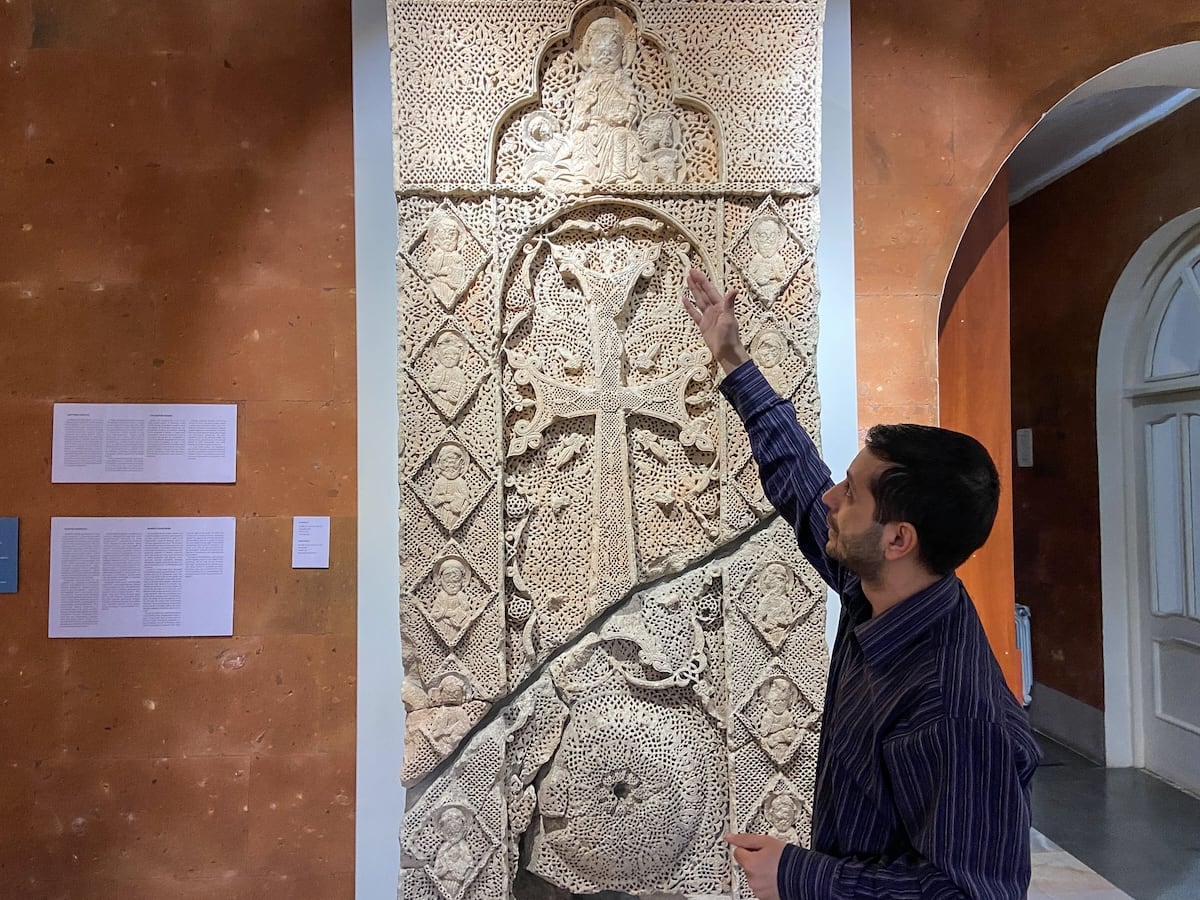
What is an Armenian Khachkar – Cross Stone?
Unlike ancient Armenian Dragon Stones, Khachkar is younger and its translated from Armenian, meaning ‘cross-stone,’ or ‘a cross on a stone (խաչքար).
In other Christian civilizations, it’s possible to find pieces of rock with engraved crosses on them.
However, Armenia is the only country in the world to have created cross-stones recognized as a unique art masterpiece since the 9th century, thereby showcasing its rich Armenian heritage.
Since then, in the same traditional fashion, Armenian cross-stones have been made throughout Armenia and even beyond its borders.
Facts about Armenian Khachkars:
- Origin Period: 9th century CE (earliest dated: 879 CE)
- World Recognition: UNESCO Intangible Cultural Heritage recognition (2010)
- Primary Material: Armenian volcanic tuff stone
- Active Tradition: Still practiced by master craftsmen today
- Global Distribution: Found in 60+ countries worldwide
- Historical Count: Over 50,000 documented examples
Understanding Armenian Cross Khachkar Monuments
During the Armenian pre-Christianity period in the 9th century CE, during the Bagratid Armenian Kingdom (885-1045 CE), the Armenians had started to create stone carvings and early Christian religious symbolism as a form of decorative religious art, which were mostly decorations of Armenian churches.
Their function was as complex spiritual documents that encoded centuries of Armenian theological thought, artistic innovation, and cultural identity, and they later became UNESCO-recognized cultural treasures.
The design of khachkars and their complexity were getting updated century after century, symbolizing Christianity over death and paganism.
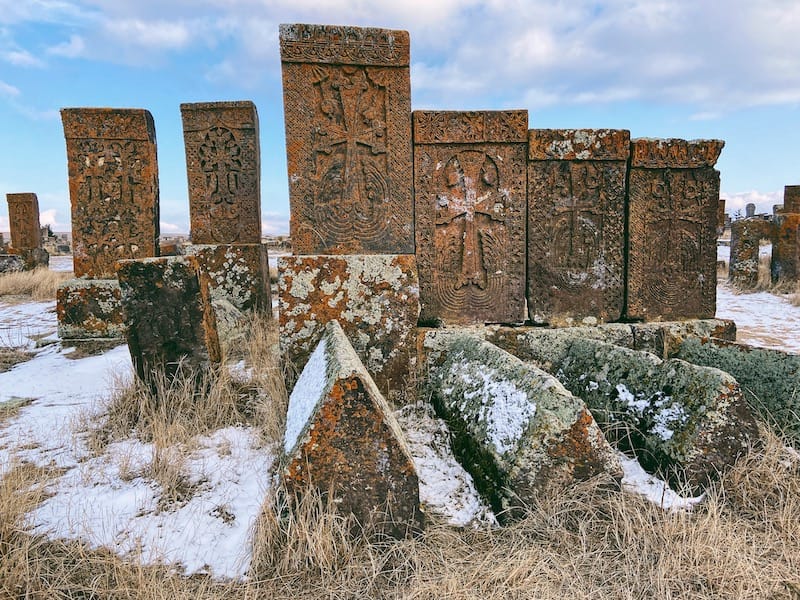
Historical Development Timeline:
- 879-1000 CE: Foundation period with basic cross designs
- 1000-1200 CE: Classical period featuring elaborate geometric patterns
- 1200-1350 CE: Golden age with the most sophisticated artistic achievements
- 1350-1600 CE: Late medieval adaptations and regional variations
- 1600-present: Modern revival and diaspora preservation efforts
The Oldest Armenian Khachkar in the World
The oldest known Armenian khachkar that is documented is the Garni Khachkar (879 CE).
This pioneering monument established the fundamental design principles and symbolic vocabulary that would guide khachkar creation for over a millennium. The original is now housed in the History Museum of Armenia in Yerevan.
Historical Specifications:
- Date: 879 CE (Armenian Era 328)
- Location: Originally Garni village, Kotayk Province
- Current Location: History Museum of Armenia, Yerevan
- Dimensions: 1.85m height × 1.12m width × 0.28m depth
- Material: Pink volcanic tuff stone
- Inscription: “In memory of Prince Grigor, son of King Ashot”
The Garni khachkar demonstrates remarkable artistic maturity of medieval Armenian artists, considering it represents the earliest dated example of this tradition.
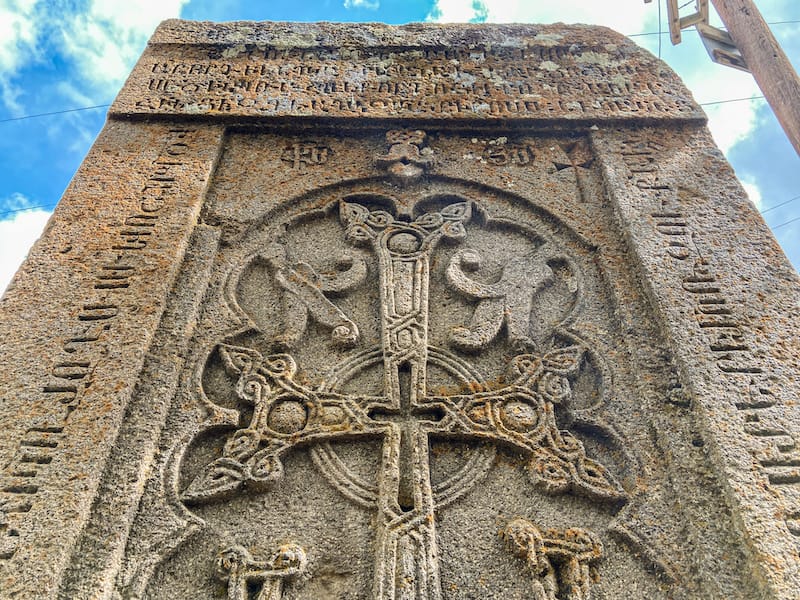
Key Design Features:
- Cross Design: Flared terminals with stepped base
- Decorative Patterns: Interlacing geometric designs
- Symbolic Elements: Early eternity symbols and rosette motifs
- Inscription Style: Classical Armenian script (Erkatagir)
- Relief Depth: 8-12 centimeters maximum depth
It’s worth noting: Noratus Cemetery is one of the most culturally significant sites in Armenia, housing hundreds of unique medieval and even older Armenian khachkars.
Unfortunately, there was a similar Armenian cemetery in Old Jugha in Nakhichevan that was demolished by the Azerbaijani government in 2005, and its loss is a known tragedy for Armenians and Armenian heritage.
Armenian Khachkar Design Elements and Artistic Techniques
Armenian khachkar design follows sophisticated compositional principles that balance religious symbolism with artistic beauty.
The standard khachkar measures approximately 1.5 to 2 meters in height and 1 to 1.5 meters in width, though examples range from small commemorative stones to monumental installations exceeding 4 meters in height.
Standard Design Zones:
- Upper Field: Primary cross with supporting elements
- Central Field: Main decorative composition with geometric patterns
- Middle Field: Secondary symbolic motifs and transitional elements
- Lower Field: Inscriptions, donor representations, narrative elements
- Border Elements: Framing patterns and protective symbols
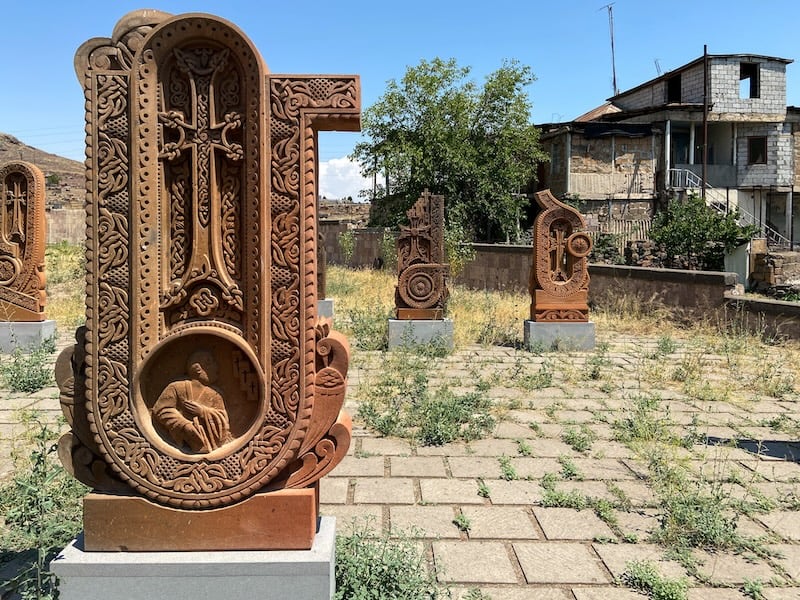
The design process requires careful consideration of proportional relationships, with master carvers following mathematical principles that create visual harmony and spiritual resonance.
The golden ratio appears frequently in khachkar proportions, reflecting both aesthetic sensibility and theological concepts about divine perfection and cosmic order.
Design Principles:
- Proportional Systems: Golden ratio and sacred geometry
- Symmetrical Composition: Bilateral symmetry with central axis
- Hierarchical Organization: Important elements receive visual prominence
- Surface Treatment: Varying relief depths create optical effects
- Integration of Text: Inscriptions incorporated as design elements
The Stone That Khachkar Was Made Of: Armenian Tuff
Armenian volcanic “tuff” has been the primary material used for khachkar construction throughout history.
This volcanic rock formed through explosive eruptions that deposited layers of ash, pumice, and volcanic fragments across the Armenian Highlands.
The unique properties of Armenian tuff make it ideally suited for detailed stone carving while providing durability that has enabled khachkars to survive centuries of weathering.
Armenian Eternity Symbol on Khachkar
The Armenian eternity symbol, appearing as an interlocking chain or rope pattern, represents one of the most distinctive elements in khachkar decoration.
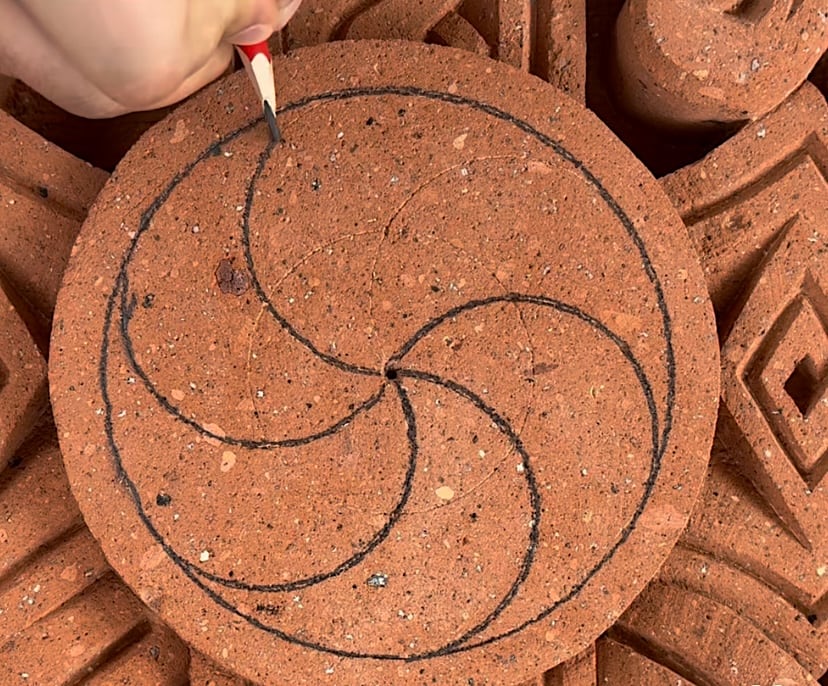
This symbol predates Christianity in Armenia, with archaeological evidence suggesting its use in pre-Christian Armenian art and architecture.
The symbol’s integration into Christian khachkar design demonstrates the sophisticated process by which Armenian culture adapted ancient traditions to new religious contexts.
Symbolic Integration in Khachkar Design
The Armenian khachkar masters over the centuries passed down the knowledge and techniques to create unique symbols, elements, and features.
It is possible to see these in many khachkars, but they always have a twist that makes them different from each other.
The symbols often appear in transition zones between major design elements, creating visual continuity while reinforcing the monument’s spiritual message about eternal life and divine protection.
Design Elements:
- Frame Elements: Continuous borders around the entire composition
- Transition Bands: Separating different symbolic zones
- Decorative Accents: Small-scale pattern elements
- Structural Integration: Supporting architectural elements
- Textual Incorporation: Decorating inscription areas
Armenian Khachkars Around the World
The Armenian diaspora, formed through centuries of migration and displacement, has established khachkar traditions in dozens of countries worldwide.
These communities maintain cultural connections to their heritage through the commissioning, carving, and installation of khachkars in new geographical contexts.
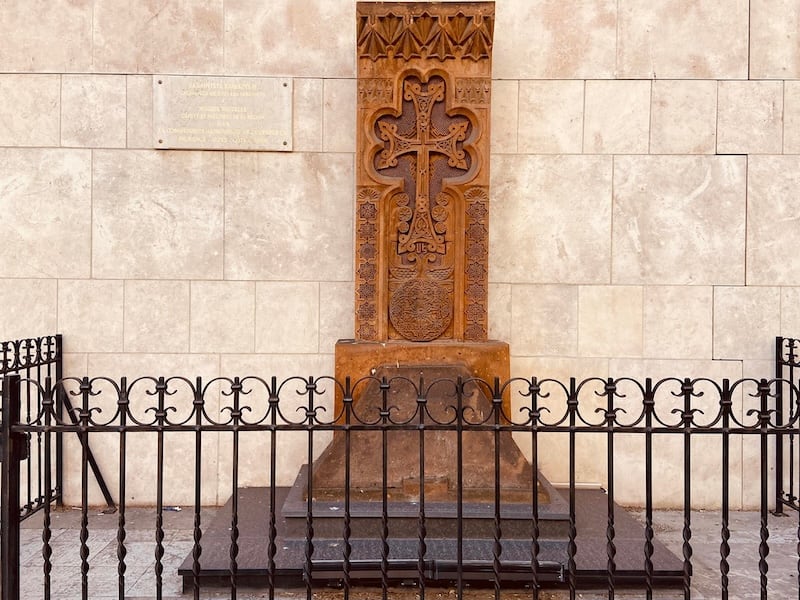
Major International Locations:
- United States: 15+ states with significant khachkar installations
- France: Paris Armenian Quarter and provincial communities
- Argentina: Buenos Aires Armenian Cultural Center
- Lebanon: Beirut and Antelias religious institutions
- Iran: Isfahan and Tehran Armenian quarters
- Russia: Moscow and southern regions
- Canada: Montreal and Toronto cultural centers
Other International Examples:
- Washington, DC: Armenian Genocide Memorial (1996)
- Paris: Père Lachaise Cemetery collection
- Buenos Aires: San Gregorio Illuminator Cathedral
- Isfahan: New Julfa district khachkar garden
- Moscow: Surb Harutyun Church installation
Good to know: St. Hovhannes chapel, near Hartagyugh village, which is located 2,157 meters above sea level, is a new place where it is possible to see some amazing new khachkars. Over the years, it has become a place of pilgrimage.
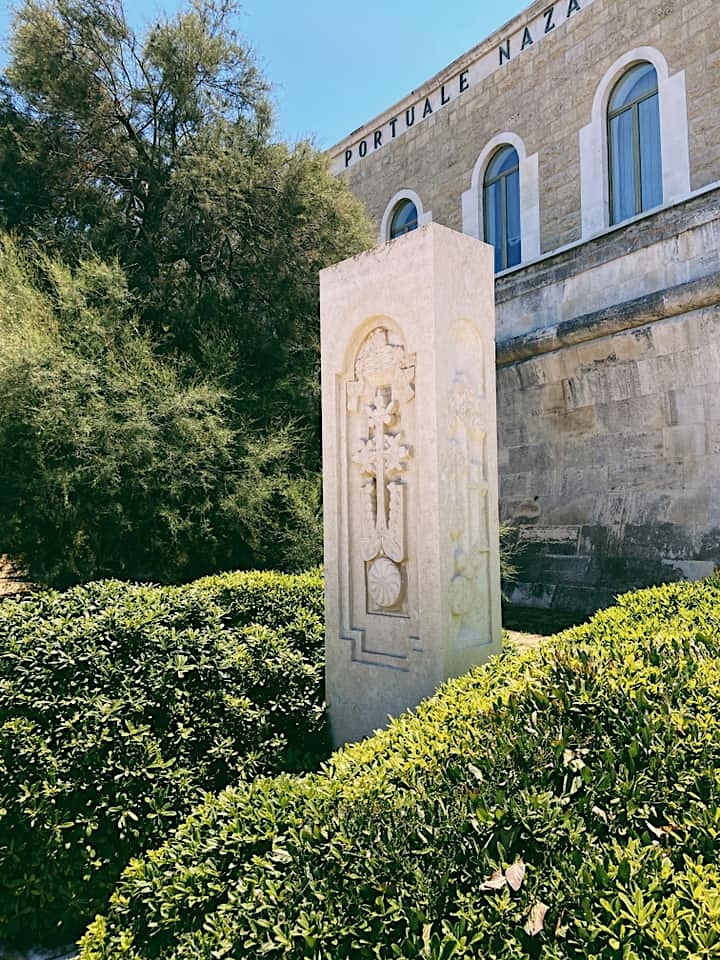
Modern Master Carvers and Workshops
The khachkar tradition continues through dedicated master craftsmen who maintain traditional techniques while adapting to contemporary contexts.
These artists work both in Armenia and the diaspora communities, ensuring the survival and evolution of this ancient art form.
Active Master Carvers:
- Ruben Nalbandyan (Armenia): Traditional techniques specialist
- Armen Diradourian (USA): Contemporary adaptations
- Vahram Papazian (France): European workshop leader
- Krikor Dzeron (Lebanon): Middle Eastern tradition maintainer
- Karekin Dickranyan (Argentina): South American innovator
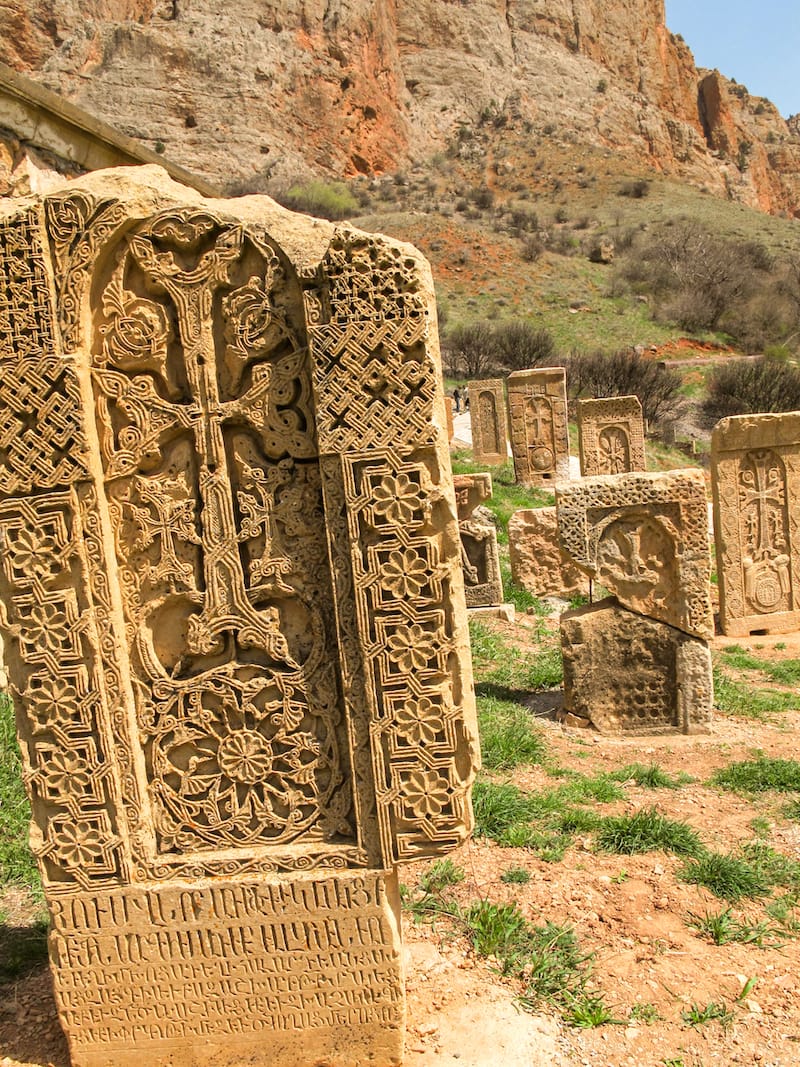
Workshop Locations:
- Yerevan, Armenia: State Academy of Fine Arts program
- Glendale, California: Armenian Cultural Association
- Paris, France: AGBU European Center
- Beirut, Lebanon: Hamazkayn Cultural Association
- Tehran, Iran: Ararat Cultural Center
Contemporary Artistic Applications
Modern khachkar artists occasionally incorporate gemstones and precious materials into their work, creating pieces that honor traditional forms while expressing contemporary artistic vision.
These works often serve as gifts between nations, memorial installations, or special commemorative pieces.
Modern Gemstone Integration:
- Symbolic Enhancement: Stones chosen for specific meaning
- Artistic Accent: Subtle highlighting of key design elements
- Cultural Exchange: Incorporating stones from installation locations
- Memorial Function: Personal significance for commemorated individuals
- Diplomatic Gifts: Enhanced versions for international presentation
